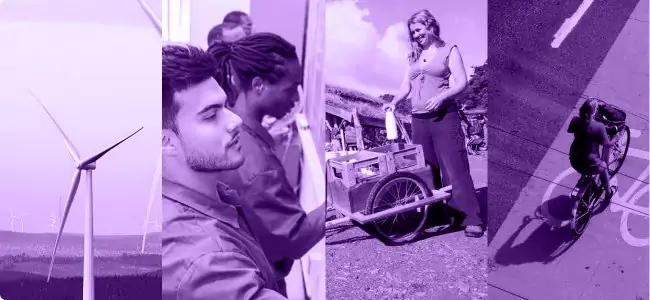Lessons for a Warming World From Kashmir’s Cooling Caves


Living Paradigms is a series about what we can learn from the customs and cultural practices of others when it comes to solving problems. It is sponsored by Wonderstruck.
On a quiet June morning in Dudran, a remote village in the Indian-administered state of Jammu and Kashmir, the stillness is broken only by the rustle of the breeze, the gurgle of mountain streams, and the lively chirping of birds. Amid this calm, Mohammad Aamir walks steadily, balancing a deaag, a large metal vessel, brimming with fresh milk. He is headed toward the village’s traditional cooling cave, locally known as a dodh daaer or dodh khot, a centuries-old, stone-lined chamber fed by icy spring water.
He pulls open the wooden doors of the cooling cave, their hinges creaking softly. Carefully, he places the metal vessel inside, nestling it among the cool stone walls. Then, with practiced ease, he places a small rock on top of the lid to keep it firmly in place, an old trick passed down through generations to secure the milk as it chills in the natural spring-cooled chamber.

Families in Dudran have long used these natural refrigeration systems to store milk, butter and cheese, preserving their dairy without the need for electricity, even during the hottest summer days. This simple, sustainable cooling method offers a promising model for remote and off-grid communities where electricity and modern refrigeration are scarce or unreliable. By harnessing natural spring water and subterranean stone structures, the caves maintain consistently low temperatures without any energy consumption or carbon emissions.
“We have around eight or nine dodh khots here,” Aamir explains. “Each one can hold about 10 to 12 large metal vessels, though some caves can fit more; it depends on the size of the spring and the structure we’re able to build around it. The layout is usually shaped by how the water flows beneath.”
The village’s eldest resident, Mohammad Yaqoob Sheikh, is known for his deep knowledge of Dudran, its history and the traditional cooling caves. His modest home — built entirely from stone, mud and timber — is located up a steep, winding path. Inside, the scent of woodsmoke lingers in the air. A few women move about quietly, one tending to a child, another crouched near the hearth preparing Haakh (collard greens), a local dish, in a traditional pot.
Weighed down by negative news?
Our smart, bright, weekly newsletter is the uplift you’ve been looking for.“These caves have been here since my childhood, and my father used to tell me they were here in his time too,” Sheikh explains from where he is resting on his bed. “Our forefathers came and settled in this village. I am the 10th generation. We’ve always reared cows, buffaloes and cattle, and milk has always been abundant. From the beginning, the dodh daaer have been here.”
Sheikh’s words not only speak of tradition but are also echoed in the name of the place itself, which reflects its rich tradition of dairy production: Dud means milk in Kashmiri, and ran means village. Together, Dudran literally translates to “the milk village.”

For the people of Dudran, this practice is not just rooted in heritage, it’s a response to daily realities. Power cuts are frequent, and the cold caves offer both sustainability and security. Not one of the village’s roughly 150 households owns a refrigerator. By avoiding electric refrigerators, Dudran is also minimizing its climate footprint, saving an estimated 7,100 kilograms of carbon emissions annually across households. This makes the caves an unexpected model for low-tech sustainability in a high-altitude region shaped by conflict, remoteness and resilience.
Himanshu Dixit, program associate at the Council on Energy, Environment and Water (CEEW), a public policy think tank in India, highlights the broader value of such systems: “Practices like dodh khots in Dudran are carbon neutral, they don’t require any external energy for preservation of dairy products,” he explains. “These are highly specialized adaptive practices for cooling, evolved to suit the unique topography and climate.”
The use of the caves goes beyond dairy, reflecting the community’s deep trust in this natural cooling method for preserving a variety of perishable goods. “We don’t just store milk, butter, and cheese in the caves,” explains Bilal Ahmed Sheikh, another villager. “During Bakr Eid, we also keep meat in the caves, and sometimes we store perishable vegetables like tomatoes there as well.”
Dudran’s caves could be adapted in other remote regions facing limited electricity and refrigeration challenges. Similar high-altitude and off-grid areas like Ladakh, the Himalayas of Nepal and Bhutan, northern Pakistan, Afghanistan, Central Asia, the Andes and parts of sub-Saharan Africa could benefit from this low-tech method to preserve food, medicine and vaccines.
Dixit offers a broader perspective on integrating such solutions into national and global strategies. “Nature-based approaches are an important area to pursue to reduce our dependence on energy-based technologies and systems. When used together, they can complement each other to reduce overall carbon emissions and make us resilient,” he says. “To that extent, [these] approaches have a role to play in India’s broader strategies for sustainable cooling and climate commitments.”


Wait, you're not a member yet?
Join the Reasons to be Cheerful community by supporting our nonprofit publication and giving what you can.
Join Cancel anytimeHowever, he cautions that passive refrigeration methods like Dudran’s caves work best when paired with more active refrigeration techniques to reduce overall energy consumption. “Basic infrastructure provisioning such as cold-chain systems for perishable products and medicines is equally vital,” he notes.
What makes the cooling cave system powerful is its simplicity: It relies not on machines but on nature itself. What began as a necessity in a remote Himalayan village now demonstrates that sometimes, innovation in climate resilience doesn’t require new technology, but rather a return to old wisdom.






Please be good and do not spam. Thank you.